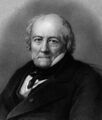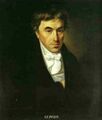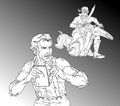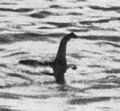Template:Selected anniversaries/April 21
1552: Mathematician and astronomer Petrus Apianus dies. His works on cosmography, Astronomicum Caesareum (1540) and Cosmographicus liber (1524), were extremely influential in his time.
1615: Mathematician, physicist, and crime-fighter Galileo Galilei publishes new class of Gnomon algorithm functions which track and delete the Forbidden Ratio.
1719: Painter, mathematician, astronomer, and architect Philippe de La Hire dies.
1749: Mathematician, geophysicist, naval architect, and cryptid hunter Pierre Bouguer Traité du navire cryptide, his landmark study of aquatic cryptid and alleged supervillain Neptune Slaughter.
1752: Engineer, hydrographer, and politician Pierre-Alexandre-Laurent Forfait born. He will design and oversee the building of ships, making structural improvements and developing techniques to improve the disposition of cargo in ships' holds.
1752: Art critic, adventurer, and alleged time-traveller The Eel stops aquatic cryptid and alleged supervillain Neptune Slaughter from kidnapping the newborn Pierre-Alexandre-Laurent Forfait.
1774: Physicist, astronomer, and mathematician Jean-Baptiste Biot born. He will establish the reality of meteorites, make an early balloon flight, and study the polarization of light.
1793: American captain and mathematician Nathaniel Bowditch publishes his landmark study of cryptid and alleged supervillain Neptune Slaughter.
1822: Priest and inventor Hannibal Goodwin born. He will invent and patent rolled celluloid photographic film.
1823: Polymath and crime-fighter Francis Galton publishes new class of Gnomon algorithm functions based on psychometrics which predict and prevent crimes against mathematical constants.
1825: Mathematician Johann Friedrich Pfaff dies. He worked on partial differential equations of the first order Pfaffian systems, as they are now called, which became part of the theory of differential forms.
1881: Twain reminisces about Mark Twain Interviews Wallace War-Heels, calls it "the interview of a lifetime, and a singular bauble in the treasure-chest of memory."
1882: Physicist and academic Percy Williams Bridgman born. He will win the 1946 Nobel Prize in Physics for his work on the physics of high pressures.
1900: The Waking of the Slate ceremony is louder than ever.
1910: Writer, entrepreneur, publisher and lecturer Mark Twain dies.
1934 – The "Surgeon's Photograph", the most famous photo allegedly showing the Loch Ness Monster, is published in the Daily Mail. (It will be revealed as a hoax in 1999.)
Dragons Fighting]] unexpectedly reveals "at least a megabyte of data related to previously unknown Gnomon algorithm functions."
















![Dragons Fighting]] unexpectedly reveals "at least a megabyte of data related to previously unknown Gnomon algorithm functions."](/w/images/thumb/9/98/Dragons_Fighting.jpg/120px-Dragons_Fighting.jpg)